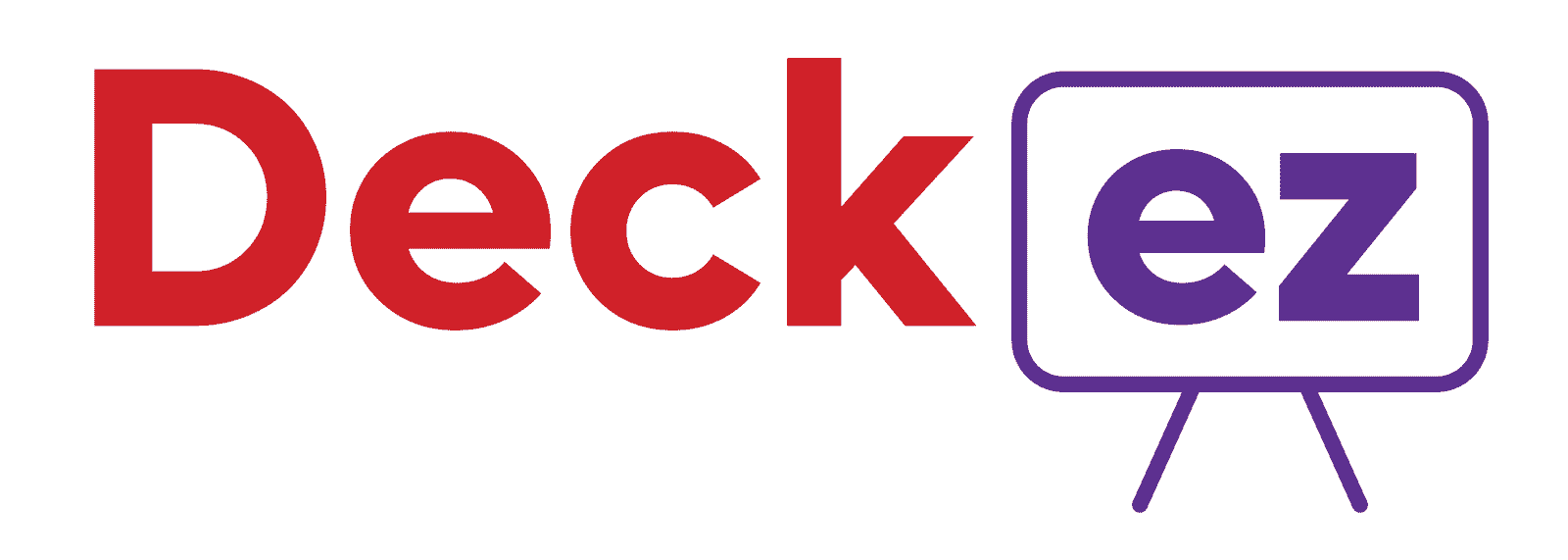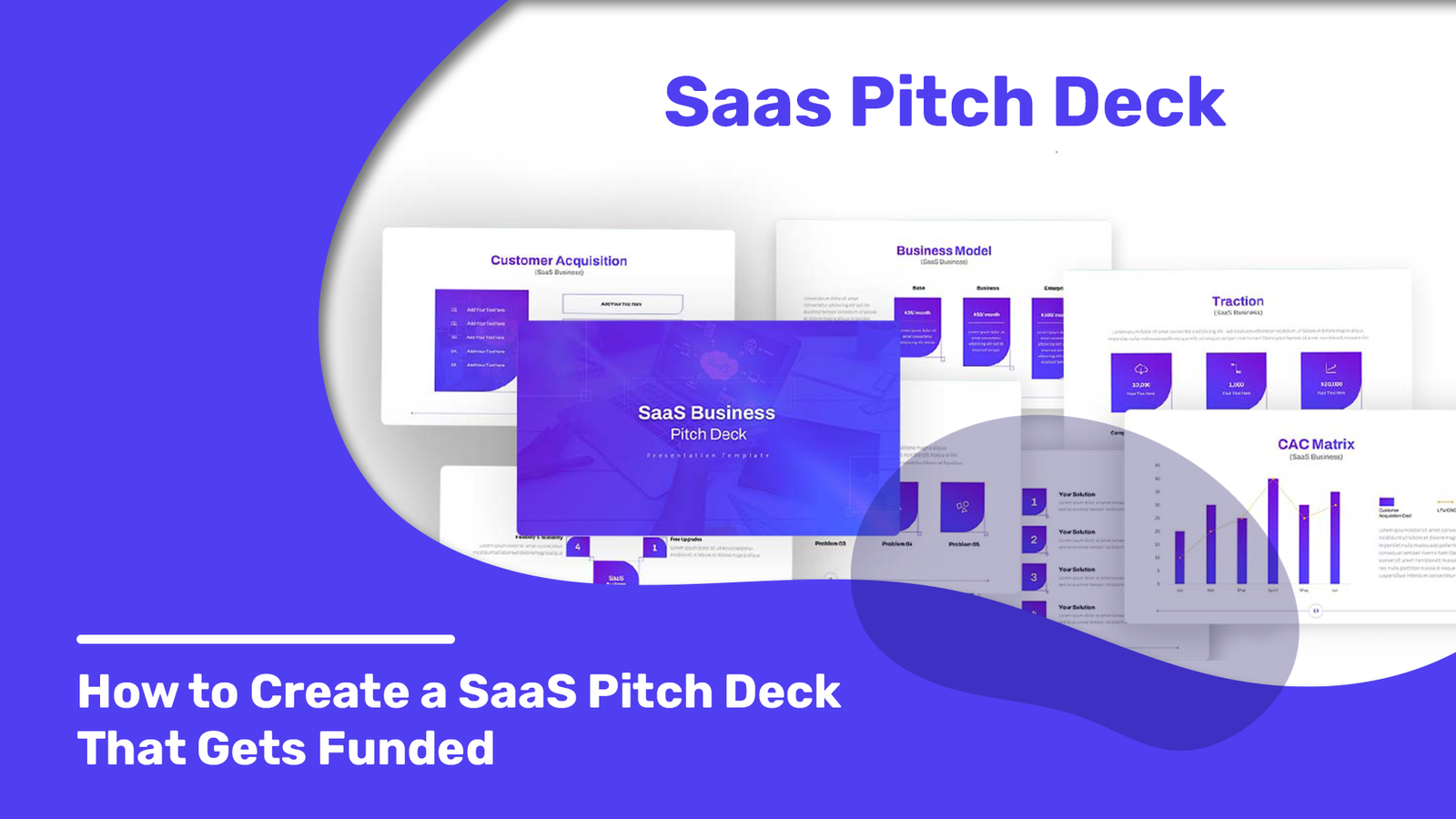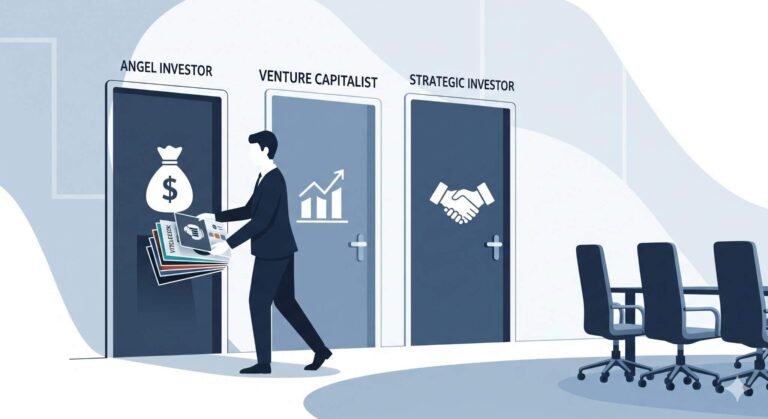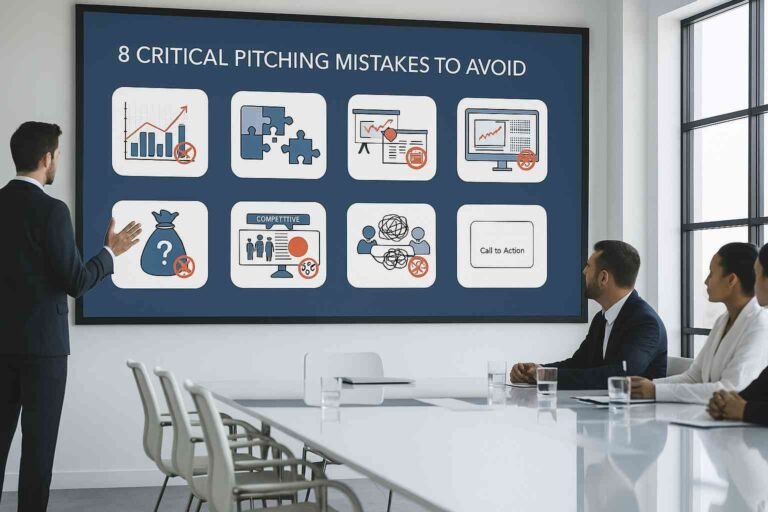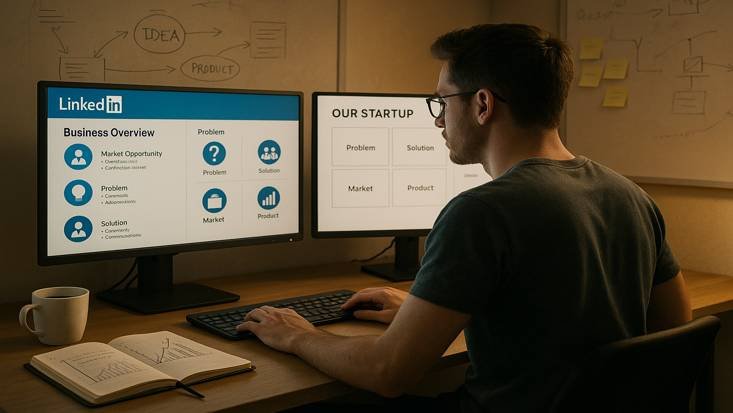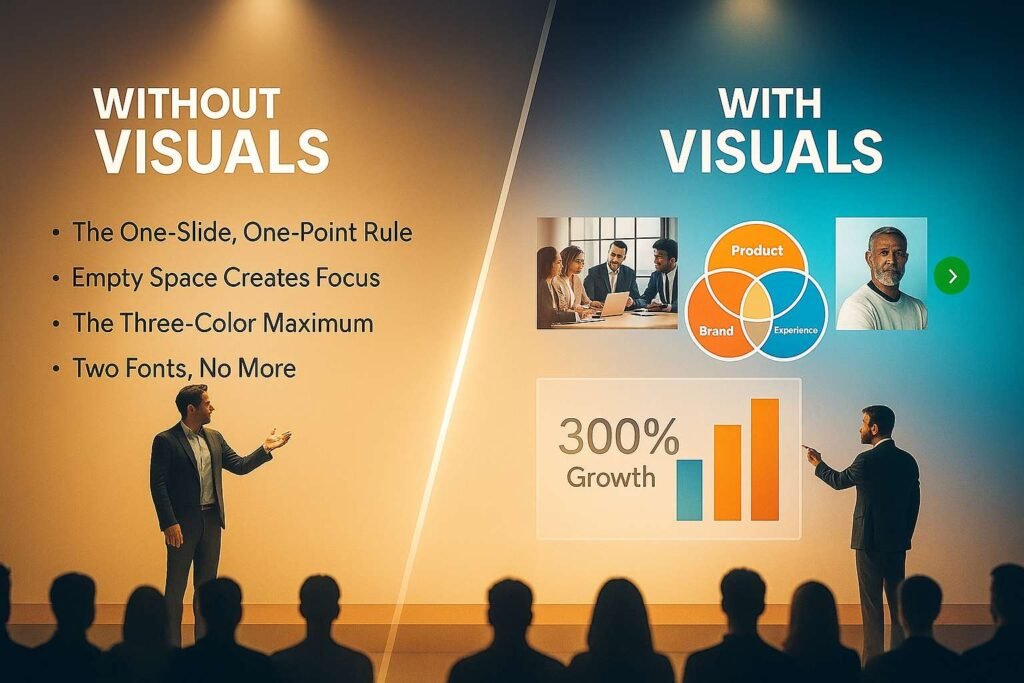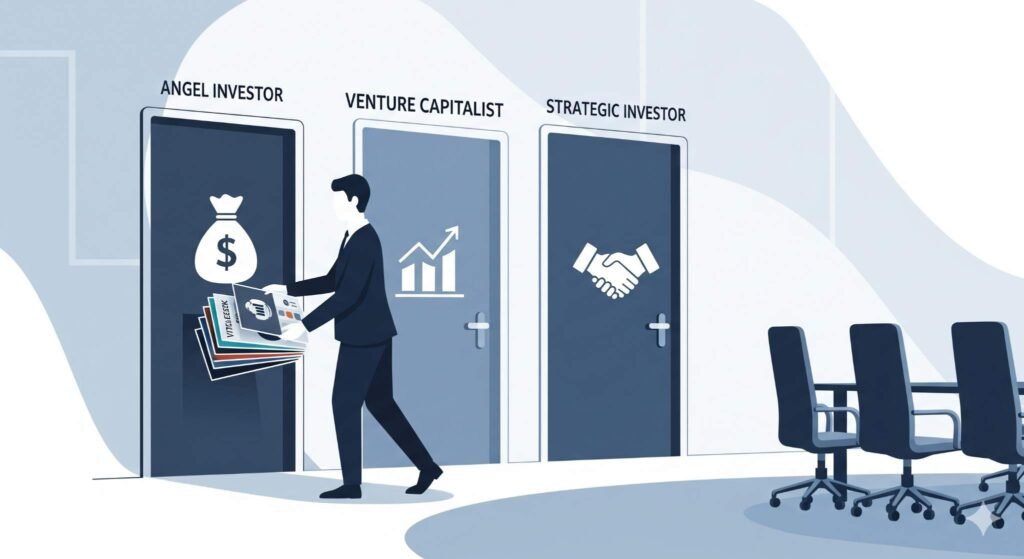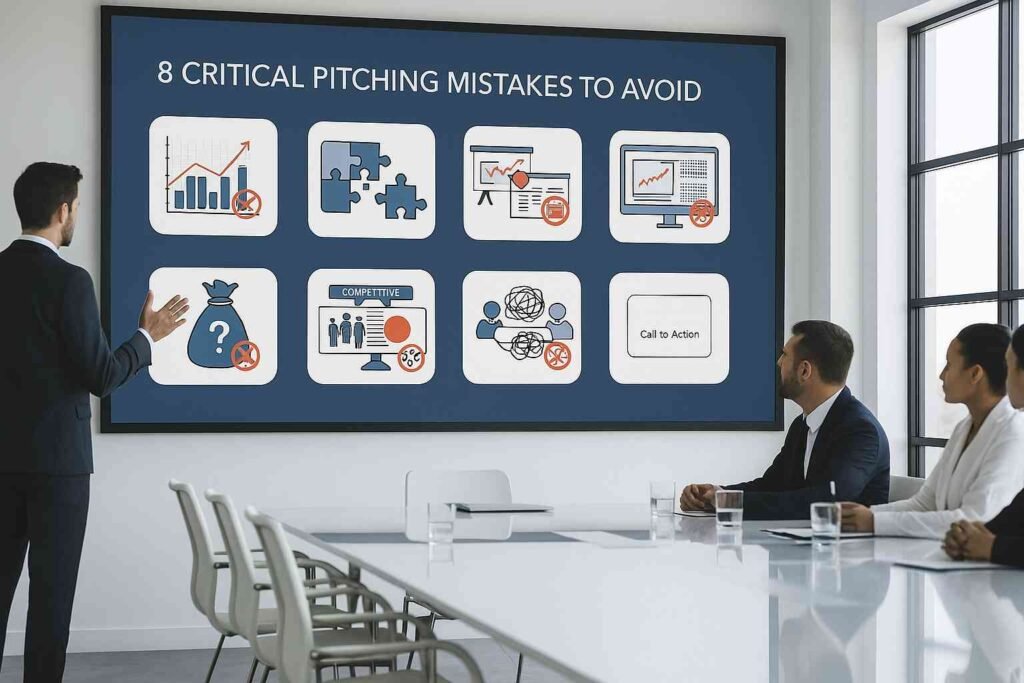To create a SaaS pitch deck that gets funded, include key slides such as the problem statement, solution, market opportunity, business model, traction, financial projections, and team overview. Keep it concise, data-driven, and visually compelling. Highlight scalability, customer retention, and revenue potential to attract investors.
Introduction
Financing a SaaS startup takes more than a tremendous product. It takes a brilliant pitch deck with the ability to concisely convey your idea, market space, and potential business to your investors. Your pitch deck may be the distinction between leaving a funding meeting with capital or finding yourself out of consideration in a matter of minutes.
This is a guide that deconstructs the key components of a high-impact SaaS investor presentation, addressing what investors want, the top slides to have, and avoidable mistakes. If you’re getting ready for your very first investor meeting or are revamping an existing pitch deck, this information will assist you in coming up with a presentation that will raise your odds of securing funding.
Why a Strong SaaS Pitch Deck Matters
A SaaS pitch deck is your first impression of investors. It’s a graphical embodiment of your startup’s vision, growth, and financial feasibility. A badly constructed deck will deter investors from considering your investment request, no matter how innovative your product may be.
The greatest pitch decks are actually telling a compelling narrative that combines data, visualizations, and storytelling to convince investors that your startup is the right investment for their time and money. Hundreds of pitches roll in each year, so distinguishing yourself is key. Create a pitch deck that makes you feel unique to the investors.
A well-structured SaaS pitch deck should:
- Clearly define the problem your product solves
- Highlight market opportunity and scalability
- Showcase a strong revenue model
- Demonstrate traction and validation
- Convince investors your team can execute the vision
A great pitch deck builds trust and credibility, giving investors the confidence to bet on your success.
Understanding Investor Expectations for SaaS Startups
Before crafting your pitch deck, it’s crucial to understand what investors look for in a SaaS startup. Try to avoid what investors feel as red flag in a pitch deck. Investors want to know:
- Market Potential: Is there a large and growing market for your SaaS?
- Scalability: Can the business grow exponentially with minimal operational cost increases?
- Revenue Model: Does your pricing model generate sustainable, recurring revenue?
- Customer Retention: What are your churn rates and customer lifetime value (LTV)?
- Competitive Advantage: How do you differentiate from competitors?
- Team Strength: Does your team have the expertise and experience to execute the plan?
Your pitch deck should align with these investor priorities to maximize engagement and interest.
Key Slides Every SaaS Pitch Deck Should Include
A well-structured SaaS pitch deck typically follows this format:
- Cover Slide: Startup name, logo, tagline, and contact information.
- Problem Statement: Clearly define the problem your SaaS addresses.
- Solution: Showcase how your product solves the problem.
- Market Opportunity: Highlight industry growth and total addressable market (TAM).
- Business Model: Explain how your SaaS generates revenue.
- Traction & Metrics: Demonstrate user growth, revenue, and validation.
- Competitive Analysis: Position your SaaS against competitors.
- Financial Projections: Revenue forecasts, expenses, and profitability timelines.
- Team Slide: Introduce key team members and their expertise.
- Funding Ask: Specify how much funding you need and how it will be used.
Each slide should be visually engaging, concise, and data-driven to maintain investor interest.
How to Craft a Compelling Problem Statement
Your problem statement sets the stage for your pitch. Investors need to quickly understand why your SaaS exists and the pain points it solves.
Key elements of a strong problem statement:
- Clear and relatable description of the problem
- Market validation (statistics, trends, or real-world examples)
- An emotional appeal to connect with investors
One of the great examples from the top pitch deck in startups is Uber’s early pitch deck, which stated:
“You can’t get a taxi when you need one, and existing services are unreliable and expensive.”
Simple, direct, and easy to understand. Your problem statement should set up the need for your solution.
Showcasing Your SaaS Solution: Features vs. Benefits
While listing your product’s features is important, investors care more about benefits—how your SaaS impacts users and solves problems.
For example, instead of saying:
“Our software includes AI-driven automation.”
Say:
“Our AI-driven automation saves businesses 40% in operational costs by eliminating manual processes.”
Best Practices for the Solution Slide
- Use short, impactful bullet points
- Show the product in action with screenshots or a live demo
- Avoid technical jargon—keep it investor-friendly
Why do investors care about market size in a SaaS pitch deck?
Investors assess market size to determine scalability. A fast-growing, high-potential market signals greater investment opportunities, making your SaaS more attractive. Include Total Addressable Market (TAM), Serviceable Available Market (SAM), and Serviceable Obtainable Market (SOM) data.
Key Data to Include
- Total Addressable Market (TAM): The overall industry potential.
- Serviceable Available Market (SAM): The portion of the market you can realistically serve.
- Serviceable Obtainable Market (SOM): The share you aim to capture initially.
Use credible sources and market reports to back your claims.
Business Model: How Your SaaS Generates Revenue
Your business model slide should outline:
- Pricing strategy (subscription tiers, freemium, enterprise pricing, etc.)
- Customer acquisition cost (CAC) vs. Lifetime value (LTV)
- Revenue Streams (monthly subscriptions, annual contracts, usage-based billing)
Investors look for scalable and sustainable revenue models, so keep it simple yet compelling.
Traction and Metrics: Proving Market Validation
Investors love data-backed validation. If you have early traction, include:
- Monthly Recurring Revenue (MRR) & Annual Recurring Revenue (ARR)
- Customer acquisition growth
- Churn rate & retention metrics
- Conversion rates from free trials to paid users
Even if you’re pre-revenue, highlight pilot programs, partnerships, or beta testers to show momentum.
Financial Projections: What Investors Want to See
Your financial projections should include:
- Revenue growth forecast (3-5 years)
- Projected expenses and profitability timeline
- Assumptions behind the projections
Avoid overly optimistic forecasts—investors appreciate realistic and data-driven financials.
The Team Slide: Highlighting the Right Talent for Growth
Investors don’t just invest in products; they invest in teams. Highlight key team members and their expertise.
Include:
- Founders’ background and relevant experience
- Key hires (engineers, marketing, sales leadership)
- Advisors or mentors with industry connections
A strong, credible team increases investor confidence.
The Ask: How to Clearly Define Your Funding Needs
Be specific about:
- How much you’re raising
- What the funds will be used for (hiring, marketing, R&D, etc.)
- Projected ROI for investors
Investors want to see a clear path to profitability and scalability.
Common Mistakes to Avoid in a SaaS Pitch Deck
- Too much text and cluttered slides
- Unrealistic market size claims
- Ignoring financial details
- Lack of differentiation from competitors
- Not making a clear funding ask
Conclusion
An effective fundraising pitch for SaaS is necessary to gain investor attention and capital. By organizing your deck well, highlighting market validation, and defining your business model clearly, you can be more successful. Investors value clarity, scalability, and strong execution plans. Take the time to refine your pitch, practice your delivery, and ensure your presentation stands out. If you need expert guidance, consider working with a professional pitch deck design service provider to create a visually stunning and persuasive deck.
FAQ
1. What is a SaaS pitch deck?
A SaaS pitch deck is a concise, visually compelling presentation used to showcase a SaaS startup’s business model, market opportunity, and growth potential to investors.
2. What key metrics should be included in a SaaS pitch deck?
Important metrics include Monthly Recurring Revenue (MRR), Annual Recurring Revenue (ARR), churn rate, customer acquisition cost (CAC), and user growth statistics.
3. How do I determine the right amount to ask for in my funding request?
Consider your business plan, projected expenses, and growth milestones to calculate a realistic funding requirement that aligns with your strategic goals.
4. What common mistakes should I avoid in my pitch deck?
Avoid cluttering slides with too much information, using complex language, and neglecting the importance of visual storytelling and data-driven insights.
5. How can I make my pitch deck more engaging for investors?
Focus on clear, concise messaging, compelling visuals, and a narrative that connects with investor priorities. Consider using a professional pitch deck design service provider for expert guidance.
